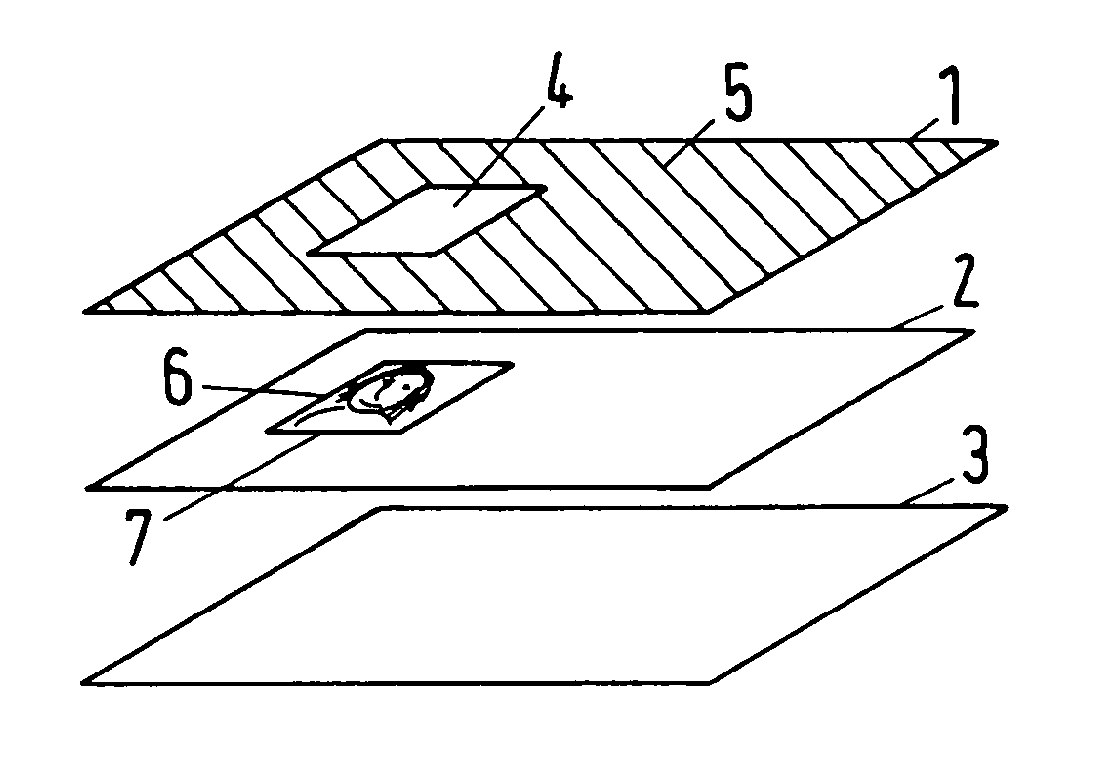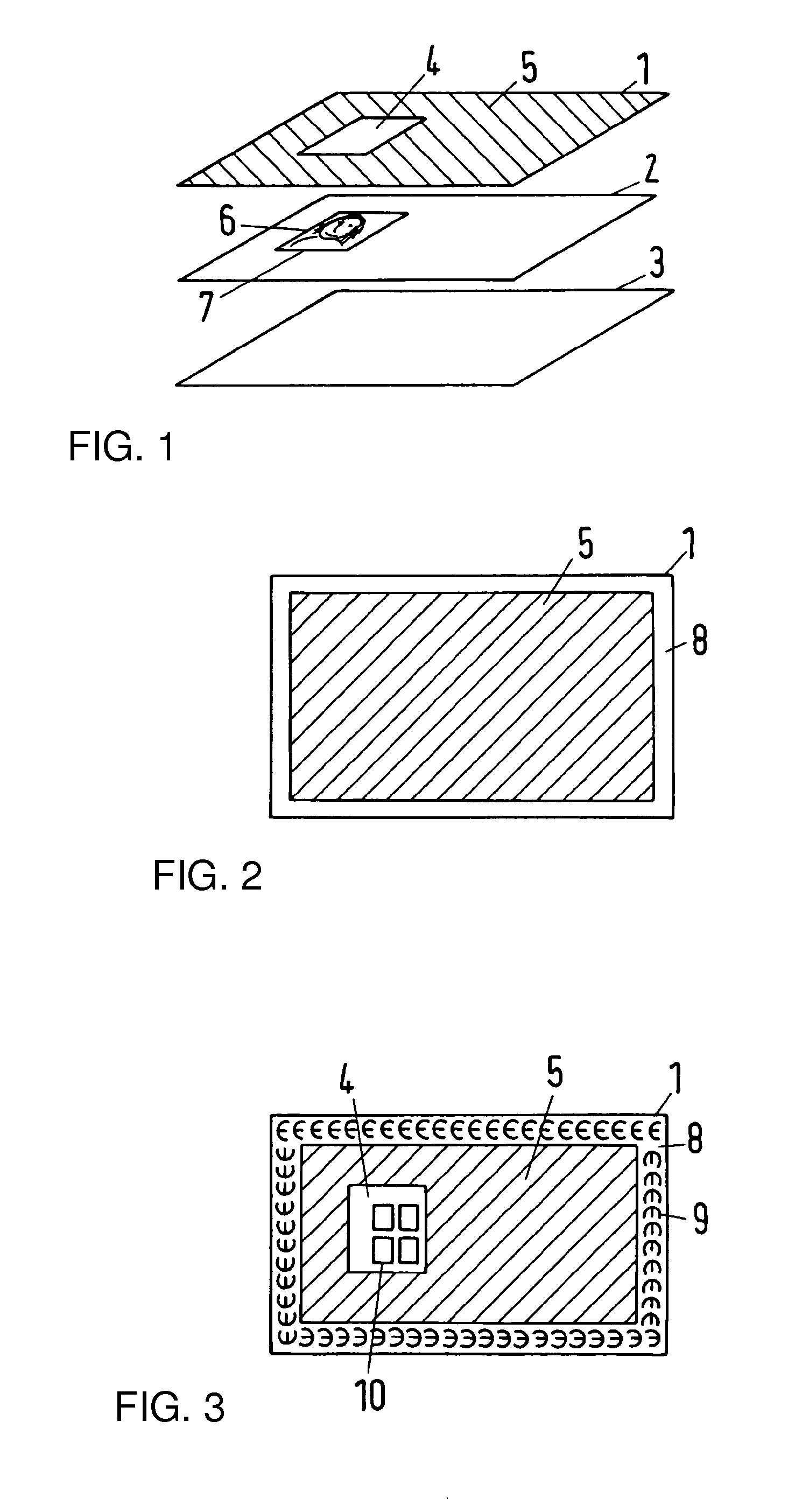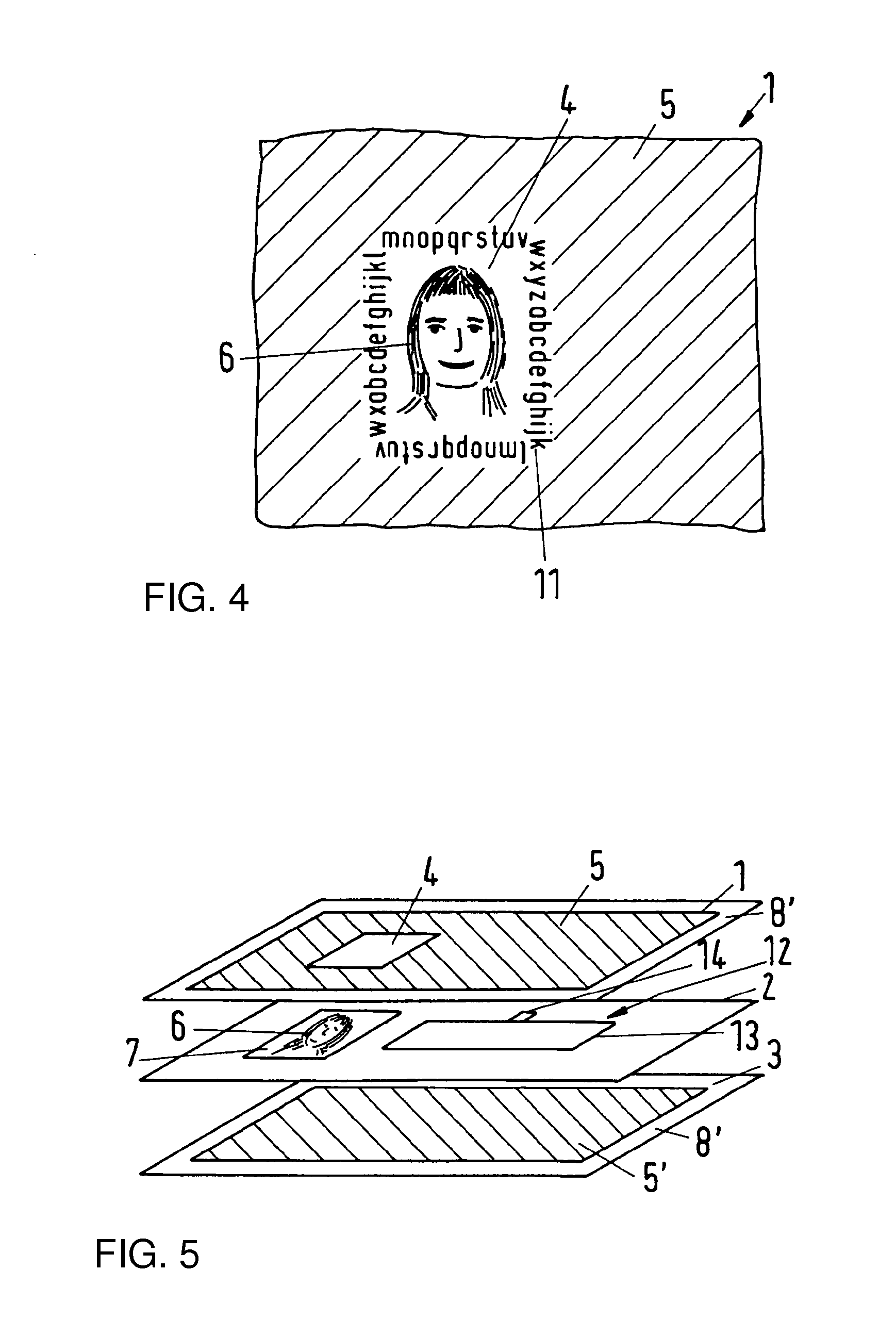Polymer laminate for a security and/or valuable document and method for the production thereof
a technology of security and/or valuable documents, applied in the direction of synthetic resin layered products, printing, computer peripheral equipment, etc., can solve the problems of affecting the esthetic appearance of the card, and being difficult to reproduce these features. , to achieve the effect of easy forged or tampered, and easy delamination or splitting
- Summary
- Abstract
- Description
- Claims
- Application Information
AI Technical Summary
Benefits of technology
Problems solved by technology
Method used
Image
Examples
example 1
Preparation of Polycarbonate Derivatives for an Ink Composition as a Binder
[0098]149.0 g (0.65 mol) of bisphenol A (2,2-bis(4-hydroxyphenyl)propane, 107.9 g (0.35 mol) of 1,1-bis(4-hydroxyphenyl)-3,3,5-trimethylcyclohexane, 336.6 g (6 mol) of KOH and 2700 g of water are dissolved in an inert gas atmosphere with stirring. A solution of 1.88 g of phenol in 2500 ml of methylene chloride is then added. 198 g (2 mol) of phosgene are then passed into the thoroughly stirred solution at pH 13 to 14 and from 21 to 25° C. Thereafter, 1 ml of ethylpiperidine is added and stirring is effected for a further 45 min. The bisphenolate-free aqueous phase is separated off and the organic phase, after acidification with phosphoric acid, is washed neutral with water and is freed from the solvent.
[0099]The polycarbonate derivative has a relative solution viscosity of 1.263. The glass transition temperature is determined as 183° C. (DSC).
example 2
Production of a Liquid Preparation Suitable for the Production of an Inkjet Printing Ink
[0100]A liquid preparation is produced from 17.5 parts by weight of the polycarbonate derivative from Example 1 and 82.5 parts by weight of a solvent mixture according to Table I.
TABLE ISubstance% by weightMesitylene2.41-Methoxy-2-propanol acetate34.951,2,4-Trimethylbenzene10.75Ethyl 3-ethoxypropionate33.35Cumene0.105Solvent naphtha18.45
[0101]A colorless, highly viscous solution having a solution viscosity at room temperature of 800 mPa·s is obtained.
example 3
Production of an Inkjet Printing Ink Used According to the Invention
[0102]10 g of polycarbonate solution from Example 2 and 32.5 g of the solvent mixture from Example 2 are homogenized with a magnetic stirrer in a 50 ml wide-necked glass vessel having a thread (4% strength PC solution). A colorless, low-viscosity solution having a solution viscosity at 20° C. of 5.02 mPa·s is obtained.
[0103]The polycarbonate solution obtained is additionally mixed with a white pigment for the cohesive and extensive print layer 5 on the first polymer layer 1 and with a black pigment for the passport photo 6 on the second polymer layer 2. By equivalent addition of other pigments or dyes, monochrome and / or colored inks can be produced in a corresponding manner.
[0104]Virtually no change occurs in the resolution of the pixel pattern of the passport photo printed with the ink in the joining process, in which the second polymer layer 2 printed with the pixel pattern is bonded to the first polymer layer 1 a...
PUM
| Property | Measurement | Unit |
|---|---|---|
| Fraction | aaaaa | aaaaa |
| Fraction | aaaaa | aaaaa |
| Density | aaaaa | aaaaa |
Abstract
Description
Claims
Application Information
 Login to View More
Login to View More - R&D
- Intellectual Property
- Life Sciences
- Materials
- Tech Scout
- Unparalleled Data Quality
- Higher Quality Content
- 60% Fewer Hallucinations
Browse by: Latest US Patents, China's latest patents, Technical Efficacy Thesaurus, Application Domain, Technology Topic, Popular Technical Reports.
© 2025 PatSnap. All rights reserved.Legal|Privacy policy|Modern Slavery Act Transparency Statement|Sitemap|About US| Contact US: help@patsnap.com



